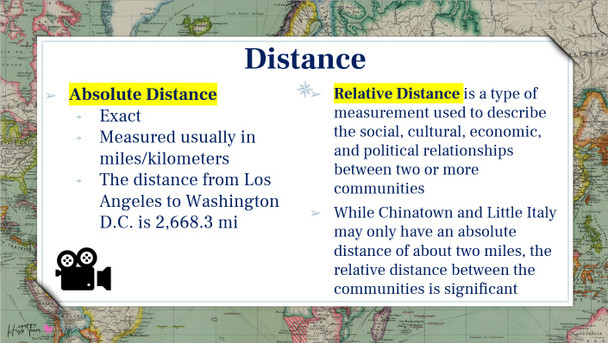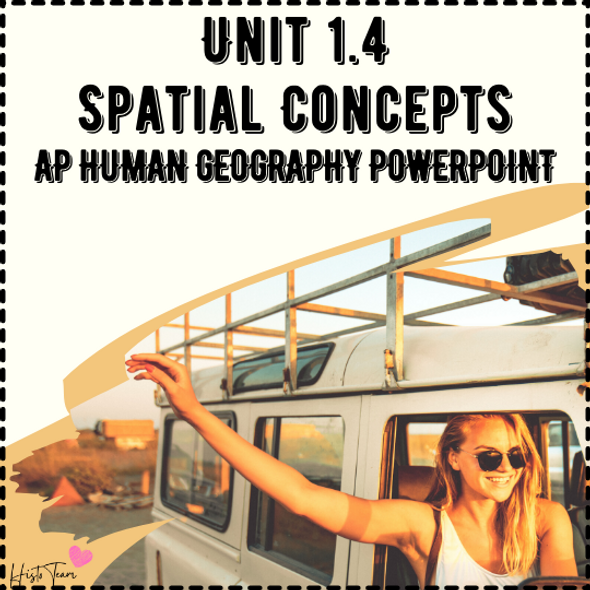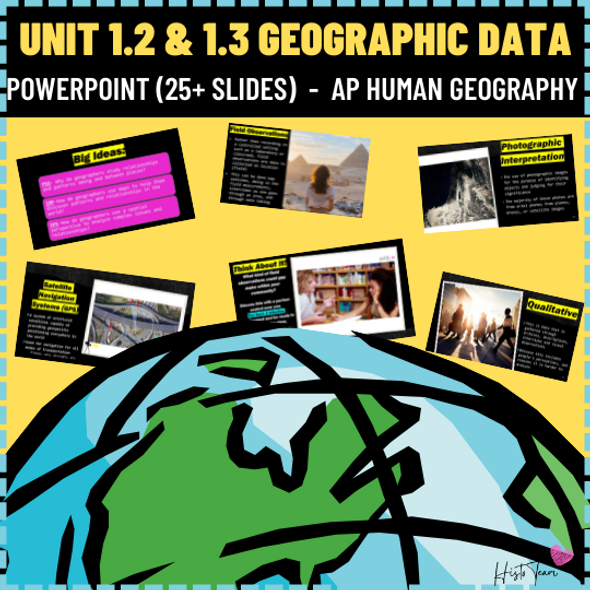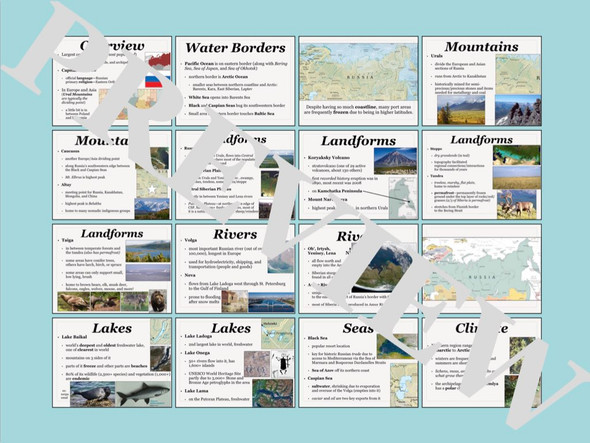Description
Use this (60+ slides) AP Human Geo PowerPoint for Unit 1.1 to introduce types of maps, the types of information presented in maps, and different kinds of spatial patterns and relationships portrayed in maps that your class will be utilizing all year. This PowerPoint includes: unit vocabulary, links to videos, a cooperative learning activity for a warm up, a variety of maps, higher-order thinking questions, checks for understanding, and other resources to support your students on all of the necessary concepts to be successful on their AP Exam. Unit 1.1 is an important introductory lesson that will serve as the foundation for many of your lessons and discussions throughout the year. Make it a memorable and informative lesson!
This Unit 1.1 PowerPoint covers the following topics:
- What is geography?
- Subfields of Human Geography
- Important figures: Eratosthenes, Ptolemy, Muhammad al-Idrisi, Christopher Columbus, Martin Waldseemuller, and Abraham Ortelius
- Vocabulary terms: latitude, longitude, absolute vs. relative location, absolute distance vs. relative distance, absolute direction vs. relative direction, cartographic scale, geographic scale, scale of data, and clustered vs. dispersed
- Types of maps: reference vs. thematic, choropleth maps, dot-density maps, graduated/proportional symbol maps, isoline maps, and cartogram maps
- Map projections: south up projection, map distortions, Mercator projection, Peters projection, Robinson projection, Goode-Homolosine projection, and Conic projection
➢Learning Objective
→IMP-1.A – Identify types of maps, the types of information presented in maps, and different kinds of spatial patterns and relationships portrayed in maps.
➢Essential Knowledge
→IMP-1.A.1 - Types of maps include reference maps and thematic maps.
→IMP-1.A.2 - Types of spatial patterns represented on maps include absolute and relative distance and direction, clustering, dispersal, and elevation.
→IMP-1.A.3 – All maps are selective in information; map projections inevitably distort spatial relationships in shape, area, distance, and direction.
HistoTeam- Trust the Team! CLICK HERE FOR MORE HISTORY RESOURCES BY THE HISTOTEAM

































